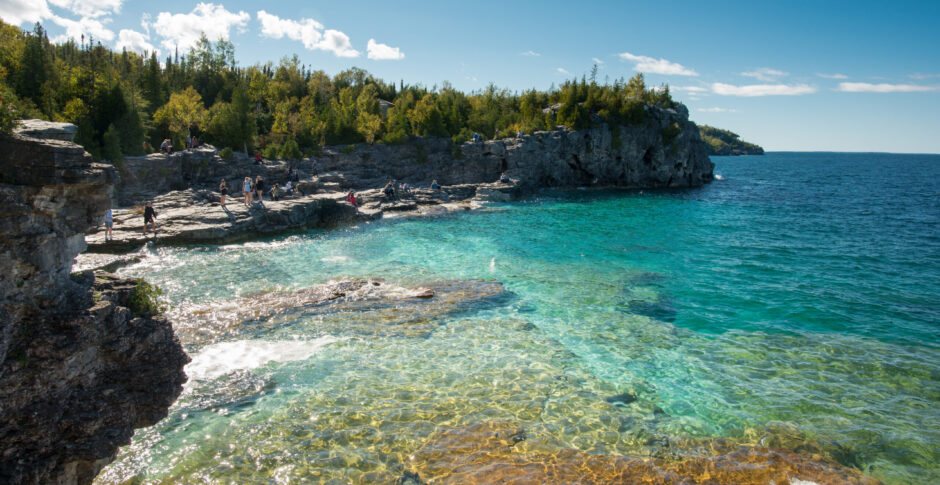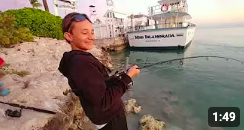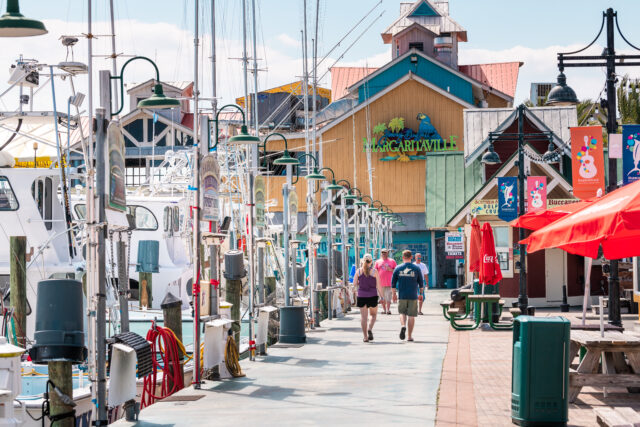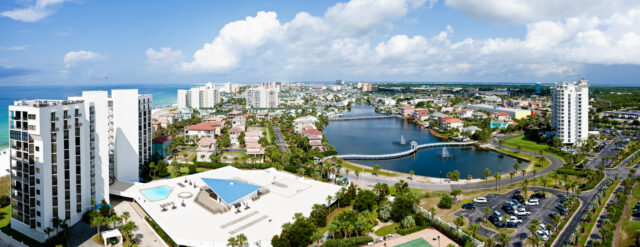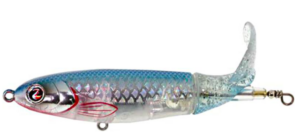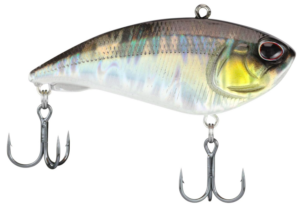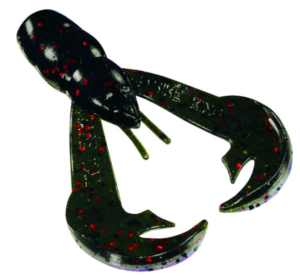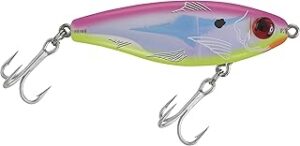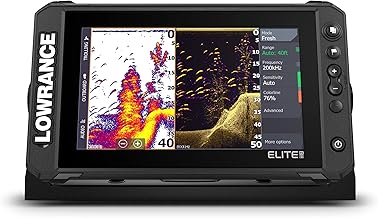Anglers catch salmon and trout in the deeper waters of Georgian Bay and out into Lake Huron. There are also several tributaries that offer spawning runs of chinook, coho and pink salmon to go along with good numbers of steelhead and small numbers of brown trout.
Salmon
Chinook, coho and pink salmon are available in the waters of Georgian Bay. Coho and Pink Salmon are here in smaller numbers, but they are here. Chinook salmon have benefitted from stocking programs from local clubs. The trout fishing is usually better in the spring and the salmon fishing picks up in summer and runs through the fall.
Lake Trout
Lake Huron is known as a great lake trout fishery and many of these fish call Georgian Bay there home as well. It’s a good lake trout fishery in terms of numbers and trophy fish are here too. There are fishing charters available to help put you on these deep water fish, but some anglers come here to fish the spring and fall as these fish move into the shallower bays and can be caught around the points, rocky shorelines and many of the same areas where you would fish for bass, walleye and pike. For the most part though, if you are looking to fish for lake trout here, plan on fishing deeper water by jigging or trolling.
Rainbow Trout
Rainbow trout are here in good numbers. Anglers usually report very good fishing for rainbow trout in the spring and fall. As rainbows move from the deeper, open waters of Georgian Bay towards the migratory streams, anglers will have good success trolling for them. In the summer, expect to find these fish in deeper water as they seek out cooler water temperatures.
Brown Trout
Brown trout are in Georgian Bay waters, but in very low numbers. Some anglers have been fishing the bay for years and have never caught one, while some anglers run into some brown trout every year. Consider it a bonus fish in the bay. Spring and fall will provide the best fishing for brown trout as they move closer in to shore.
Fish the Rivers
The tributaries of the Georgian Sound provide good fishing for salmon and trout. Some rivers and streams will also have bass, northern pike, muskie and more, but the salmon and trout trump in these tributaries.
Beatty Saugeen River
This river is a smaller tributary of the Saugeen River. It enters the South Saugeen River near the town of Hanover before entering the main Saugeen River shortly after. Anglers catch steelhead, brown trout, rainbow trout and brook trout.
Beaver River
The Beaver River is a popular river because of its excellent steelhead runs. It flows into Georgian Bay in the town of Thornbury, Ontario. This river has a few dams that the fish can pass and some fish will make it all the way upriver to Hogs Falls, which is near the town Kimberly. Besides the steelhead, this river also has brown trout, brook trout, some resident rainbow trout and salmon run up this river too.
Bighead River
The Bighead river flows into Georgian Bay in the town of Meaford. This river gets a large run of steelhead and is mostly fished near town and through the Bighead River Conservation area. Chinook salmon also make fall runs here in September and October.
Boyne River
The Boyne River is a tributary of the Nottawasaga River. It enters the Nottawasaga River in the town of Alliston and people fish right in town for steelhead, salmon and brown trout. Farther upriver, anglers do catch brook trout also closer to the town of Shelburne.
People fish right in town for steelhead, brown trout and salmon during the trout open season and there is good access there.
Mad and Noisy Rivers
The Mad River is a tributary of the Nottawasaga River and the The Noisy River is a branch of the Mad River which merges with the Mad river upriver from the town of Creemore. Both rivers have a population of brook trout and they get spawning runs of salmon and steelhead.
Nottawasaga River
The Nottawasaga River, also called the Notty, is the biggest wild steelhead river that flows into Georgian Bay. It’s slower moving, deeper waters make it somewhat difficult to catch steelhead on it because it is flat, slow and slightly cloudy. When you find the fish, it isn’t as hard to get them to bite since they won’t spook as easily as they would in clearer water, but they are harder to find for most anglers due to the lack of obvious spots. You have to put your work in on this river to learn where the steelhead like to be if you’re going to consistently catch them here.
The upper sections of the river have brown trout and brook trout, but this section of the river is almost all private lands, so you don’t have access to this area. Bass, northern pike and muskie can be caught in the lower sections of the river.
Pine River
The Pine river is the largest tributary of the Nottawasaga river. It has cold, clean water and good summer flows, which makes it a good river for steelhead and salmon. The lower Pine River empties into the Nottawasaga in the town of Angus. Because of good access here, the lower river usually gets pressured the most by anglers.
Saugeen River
The Saugeen River is a huge river system and it is home to brown trout, brook trout and resident rainbow trout. It is a wide river that gives anglers lots of water to fish. Floating this river in a drift boat is common and the best way to cover some water here to catch more fish. On the lower half of the river, anglers target steelhead and salmon when they make their spawning runs. Bass and muskie are here too.
Sydenham River
The Sydenham River has special regulations, so make sure you check the current regulations to see what areas are open to fishing and what areas are not. Steelhead and salmon make spawning runs up the river and they can’t make it passed Inglis Falls, so you have good numbers of fish in a fairly small section of river compared to some of the other spawning tributaries of Georgian Bay. Brook trout and brown trout are found here in both the upper and lower sections of the river, but most people come here to fish the spawning runs for salmon and steelhead in the lower section of the river.
